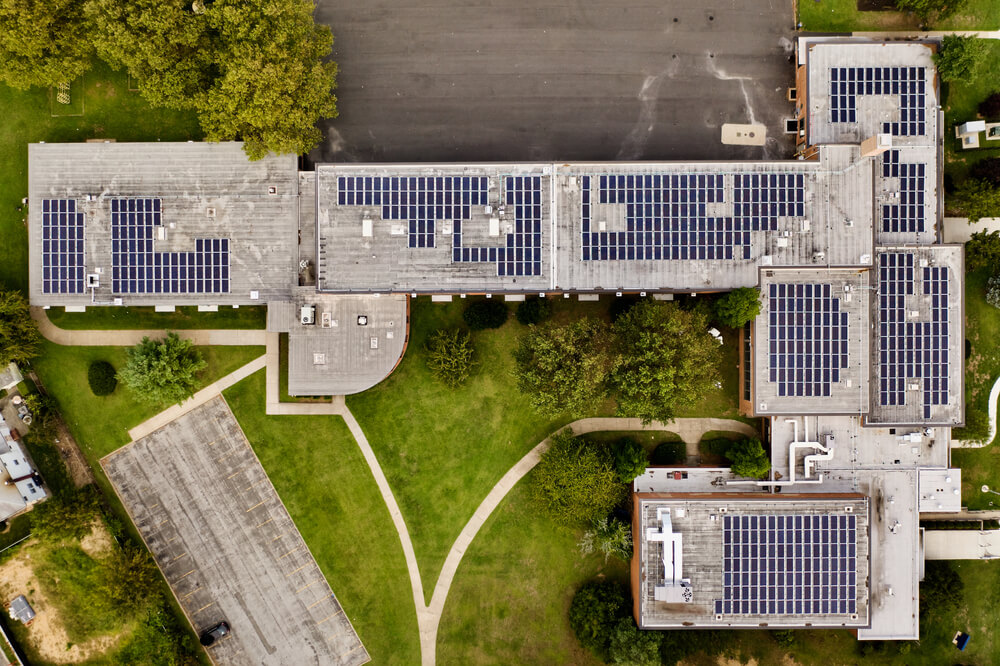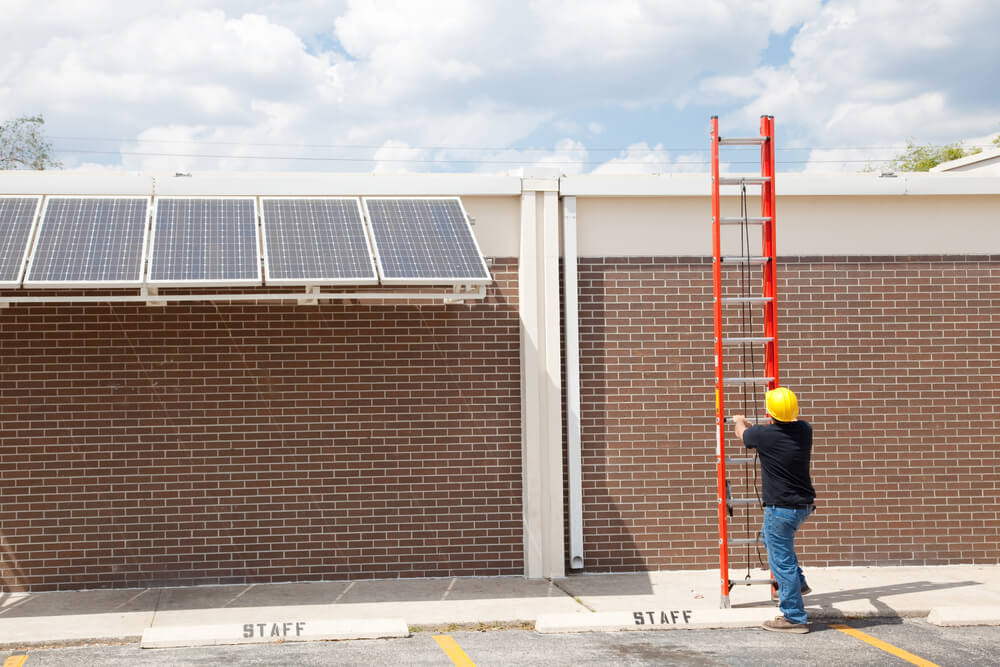Editor’s note: ImpactAlpha has partnered with HIP Investor to highlight upcoming bond issues with social and/or environmental significance. Disclaimer: Nothing in this post or on ImpactAlpha.com shall constitute an offer to sell or solicitation of an offer to buy bonds.
- CUSIP bond identifier: 7973916D6
- Issuer and Obligor: County of San Diego, California
- Impact entity rated by HIP: San Diego County, California, as a green ond
- Muni sector: Government
- Closing date: 12/19/2023
- Bond amount: $48 million for the above CUSIP maturing in 2053; all issuances across all maturities in this Green Bond series total $166 million
- Coupon: 5%
- HIP Impact Rating: 73.6 of 100 (higher than 50 connots “net positive”)
- Opportunity Zones located in the issuing entity: 47 zones covering 224,933 residents of the 3,300,000 residents in San Diego county
- Climate Threat Resilience Rating: 57 of 100 (less than 50 connotes higher climate risk)
The County of San Diego, California, is planning to issue a bond for the purpose of financing the construction of several permanent facilities at the County Operations Center. The San Diego operatoins center campus houses 3 departments of the County’s Health and Human Services Agency. This bond, totaling $166 million for all of its issuances, will finance the establishment of a new Public Health Laboratory and a parking structure, as well as capital improvements to 5 other buildings belonging to COC. To date, the County has contributed $112.3 million funds and $18.8 million in grant funding to this project.
The Public Health Laboratory will be a 52,000 square feet, two-story building. The Laboratory will support rapid testing for Zika and West Nile viruses and other illnesses; genome sequencing to identify pathogens; wastewater surveillance of Covid, Hepatitis A and other viral pathogens; and tuberculosis testing. Approximately 65% of the bond’s proceeds will be allocated to this component of the project.
Construction began September 2023 and is expected to be completed is April 2025.
Other components of the project focus on constructing a new parking space, improvements to 4 COC buildings – approximately 150,000 square feet each – used to house the Public Health Department, as well as on renovation of the County Administration Center, including major systems infrastructure and seismic upgrades.
The bond was designated as a green bond, with a second party opinion issued by Kestrel, due to its adherence to the California Green Buildings Standards Code for all project components, as well as LEED Gold certification that the Public Health Laboratory is designed to achieve.
The Green Bond project covers three of the 17 UN Sustainable Development Goals: SDG 7, Affordable and Clean Energy targets 7.2 and 7.3 (increase the share of renewable energy in the global energy mix and double the global rate of improvements in energy efficiency), SDG 9 Industry, Innovation, and Infrastructure target 9.4 (upgrade infrastructure and retrofit industries to make them more sustainable, with increased resource-use efficiency and greater adoption of clean and environmentally sound technologies), and SDG 12 Responsible Consumption and Production targe 12.2 (achieve the sustainable management and efficient use of natural resources).
HIP Impact Analysis
With the focused use of proceeds, San Diego County earns an overall “net-positive” HIP Rating of 73.6 on a 100 point scale – benefiting from a ratings enhancement of nearly 20 percentage points above the county-level average rating of 54.8. The four HIP Pillars rated excel far beyond the average, most notably Health at 82.1 and Earth at 72.4.
These results are driven by the County’s outstanding performance in Health metrics such as lower-than-average Diabetes Rates and Obesity Rates, higher-than-average Health Insurance Coverage, and a higher-than-average population obtaining a high school and higher education degrees (Bachelor’s level).
Among the Earth metrics, San Diego excels in lower-than-average CO2 emissions per capita, high proportion of renewable energy consumption, relatively low air pollution and a high reduction in energy consumption achieved by implementing energy efficiency programs.
These positive outcomes come from several initiatives: the county’s Climate Action Plan adopted in 2018, its Electric Vehicle Roadmap, and its Regional Decarbonization Framework, which is being currently developed. San Diego County has also prioritized multi-modal transportation through mobility hubs.
Environment and public health
San Diego is the second-largest county in California after Los Angeles, and has proactively used regional planning efforts to promote sustainable development and preserve natural resources.
San Diego County adopted “Design Standards for County Facilities Property”, which directs all new construction to meet LEED standards, consider Zero Net Energy, improve energy use by 20% compared to CALGreen, and integrate technologies to reduce water use.
The Public Health Laboratory’s design includes high efficiency glass to reduce energy consumption, natural lighting, low-flow water fixtures, two emergency backup generators, and a 100-kW rooftop solar array. The parking structure will feature over 100 electric vehicle charging stations and include a 600-kW rooftop solar array. Solar energy coming from the laboratory and parking structure will supply approximately 60% of electrical use at the Public Health Laboratory. On top of that, the campus will supply between 30-40% of overall energy needs.
The county also prioritizes equitable access to health services and environmental justice for vulnerable unincorporated communities. The county’s Department of Public Health has acknowledged the direct and indirect impacts of climate change on public health and provides crucial responses to air pollution, heat-related illness, extreme weather events, vector-borne diseases, and other environmental hazards. This project will serve 45 hospitals across the county.
Ripple effects
In 2018, the county adopted a Climate Action Plan that proposed 26 measures to reduce greenhouse gas emissions in rural and unincorporated areas and within government operations, and publishes annual progress reports that track its efforts.
Significant strategies include achieving 90% renewable electricity use in unincorporated areas, installing over 2,000 electric vehicle chargers, and conserving nearly 7,000 acres of land by 2030. The county aims for a 20% reduction in energy use intensity in county buildings by 2030, and a 20% increase in on-site renewable energy generation.
Additional strategies include incentivizing energy and water efficient agricultural practices, diverting solid waste from landfills, and reducing water use. Through these measures, the county has already eliminated nearly 230,000 metric tons of carbon dioxide equivalent greenhouse gas emissions in 2022.
These initiatives led to the City of San Diego ranking the “greenest” city in the United States in October 2023, largely thanks to clean energy sources and environmentally friendly policies. Additionally, the county hosted the 9th annual San Diego Green Building Conference & Expo in autumn 2023 – a premier event for green building professionals from all fields of expertise, and joined with the World Women Foundation’s Sustainability Forum. Lastly, just last month the county welcomed the 2nd edition of the annual Environmental Film Festival, dedicated to showcasing films that explore sustainability, conservation, and biodiversity.
Overall, the $166 million San Diego County bond earns a strong “net positive” HIP rating of 73.6% on a 100 point scale. The issuance received a Green Bond designation, verified through a second party opinion. The main project, a Public Health Laboratory, encompasses multiple energy efficiency and renewable energy features that align with several UN SDGs (7, 9, and 12). The comprehensive strategy that the county has undertaken to meet its sustainability objectives by 2030 and the reporting transparency are leading practices among muni bonds. Overall, our HIP evaluation shows how San Diego County leads in impact metrics benefiting public health and the environment.
Anna Rautenberg is an ESG Impact Investing Analyst at HIP Investor Ratings LLC.
DISCLOSURES: HIP Investor Inc. is a state-registered investment adviser in several jurisdictions, and HIP Investor Ratings LLC is an impact-ratings firm evaluating impact and ESG on 400,000 investment ratings, including 123,000 municipal entities, 263,000 muni-bond issuances, and 12,000 corporates for equities and bonds. HIP Impact Ratings are for your information and education – and are not intended to be investment recommendations. Past performance is not indicative of future results. All investments are risky and could lose value. Please consult your investment professionals to evaluate if any investment is appropriate for you, your goals, and your risk-return-impact profile.
Anna Rautenberg is an ESG impact investing analyst at HIP Investor Ratings.











